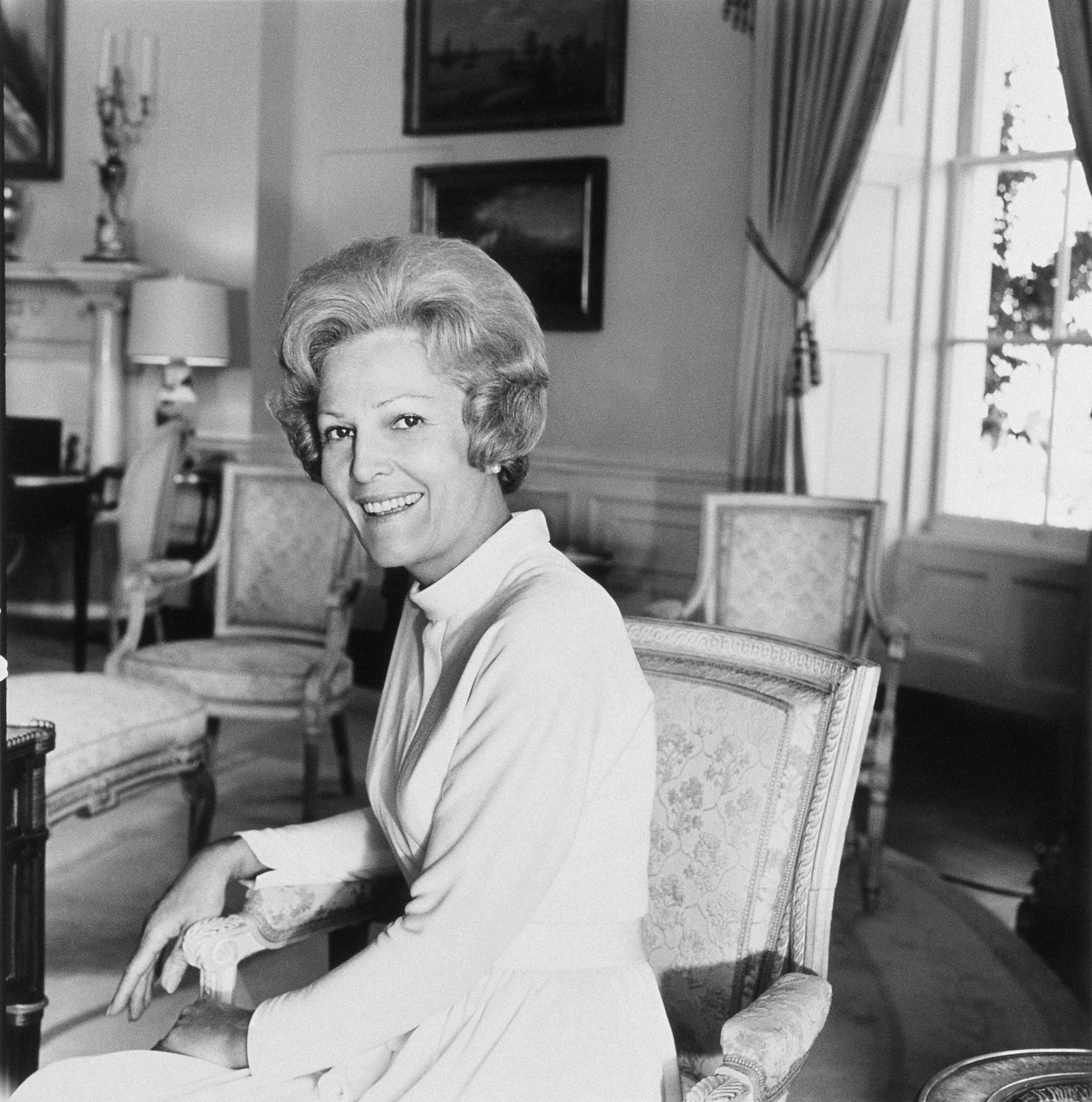
A first lady could make history in November by becoming the country’s first female president. For me, there is another first lady—a very special first lady—worth remembering and paying tribute to this Mother’s Day.
My grandmother Pat Nixon’s tenure as first lady is still highly regarded on both sides of the aisle, more than 40 years after she left the White House and more than two decades after her death, at a time when bipartisanship in politics has all but vanished.
My grandmother’s role as first lady included traveling around the world extensively as what President Richard Nixon called our nation’s ambassador of goodwill.
Indeed, long before Hillary Clinton logged the most miles ever traveled for a first lady, Mrs. Nixon traveled across the U.S. and to more than 80 countries as the wife of a congressman, senator, vice president and president. She preferred going to hospitals, schools, orphanages and village markets rather than attending official teas and receptions. She even visited a leper colony in Panama. Wherever she went, she represented the U.S. with dignity and warmth, spirit and strength, and—when required—courage.
Rosalynn Carter—the wife of then-Georgia Gov. Jimmy Carter who would later become first lady herself—still recalls the first time she met my grandmother. It was at the January 1971 funeral of longtime Democratic Sen. Richard Russell of Georgia. Though a Republican, President Nixon and wife Pat attended the funeral.
They met again a short time later when Gov. Carter, a Democrat, and his wife were invited to the White House by the Nixons for the annual governors’ dinner. Mrs. Carter recalled “how gracious, warm and friendly” Pat Nixon was.
Carter decided to run for president while the Nixons were still in the White House, and that understandably prompted Mrs. Carter to look to Mrs. Nixon’s role as first lady and what that entailed in the event her husband were to win in 1976. (As it so happens, of course, he did.)
While in the White House, my grandmother undertook an initiative to substantially upgrade the executive mansion’s paintings and furnishings. She sought to make the White House more accessible to the disabled, installing handicapped ramps and allowing blind visitors to touch the antiques.
She would often come down to the White House state floor from the residence quarters to greet tourists, shake hands, sign autographs and pose for photographs.
A primary focus of Mrs. Nixon’s tenure as first lady was to promote volunteerism. “Our success as a nation depends on our willingness to give generously of ourselves for the welfare and enrichment of the lives of others,” she said.
That attitude inspired Mrs. Carter, likewise, to focus on promoting volunteerism.
“In the years after leaving the White House, I’ve come to know [Pat’s] daughters, Tricia and Julie, and realize how much they reflect her fine character and what a wonderful mother she was,” Mrs. Carter said. “I especially admired Pat’s poise in the face of tremendous challenges. She was always gracious and courteous in every situation, and people everywhere, including me, felt a warm connection to her.”
Born into very humble circumstances—in a miner’s shack in Nevada—my grandmother led an extraordinary life, one whose big dreams were surpassed only by her ambition to achieve them.
Pat Ryan worked all sorts of odd jobs to pay her way through college at a time when only one in 10 women would complete four years of college, and she graduated with honors from the University of Southern California. She met her husband-to-be at a community theater in Whittier, Calif., where they were cast together in a stage production in 1938.
All four of her grandchildren, myself included, were born after the Nixons left the White House, so we never knew Pat Nixon as a public figure, only as a warm, wonderful woman we all called “Ma.”
Everyone enjoyed being around her, not just her grandchildren. She made people laugh, lifted their spirits and shared what President Nixon called the “sunshine of her smile.”
Despite living in the public eye for nearly 30 years, however, she was a private person and never actively sought publicity. She preferred to let her actions speak for themselves.
Perhaps as a result, Ma was highly ranked on Gallup’s annual top-10 list of the most admired women in the country 14 times, including several years after leaving the White House. Helen Thomas, the longtime White House correspondent for UPI, said my grandmother “was the warmest first lady I covered and the one who loved people the most.”
On June 22, 1993, just one day after the Nixons celebrated their 53rd wedding anniversary, Ma passed away. It was at her funeral that the country saw, likely for the first time, Richard Nixon break down and cry.
I share all of this not only to pay tribute to my wonderful grandmother, but I also hope that her story and my family’s story may be a source of inspiration to grandmothers and grandchildren around the country and around the world. Her example is one that will live on for ages. She would like that.
I encourage everyone to learn more about my grandmother by visiting the new Nixon Library and Museum that will open to the public on Oct. 14 in Yorba Linda, Calif.
More Must-Reads from TIME
- Cybersecurity Experts Are Sounding the Alarm on DOGE
- Meet the 2025 Women of the Year
- The Harsh Truth About Disability Inclusion
- Why Do More Young Adults Have Cancer?
- Colman Domingo Leads With Radical Love
- How to Get Better at Doing Things Alone
- Michelle Zauner Stares Down the Darkness
Contact us at letters@time.com